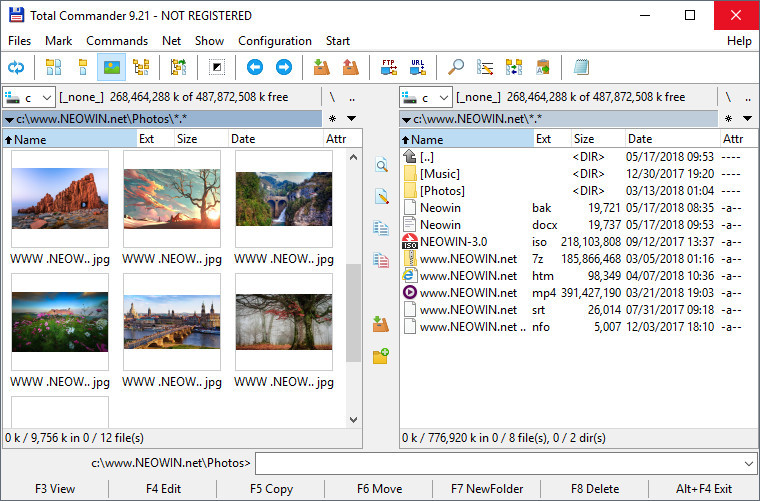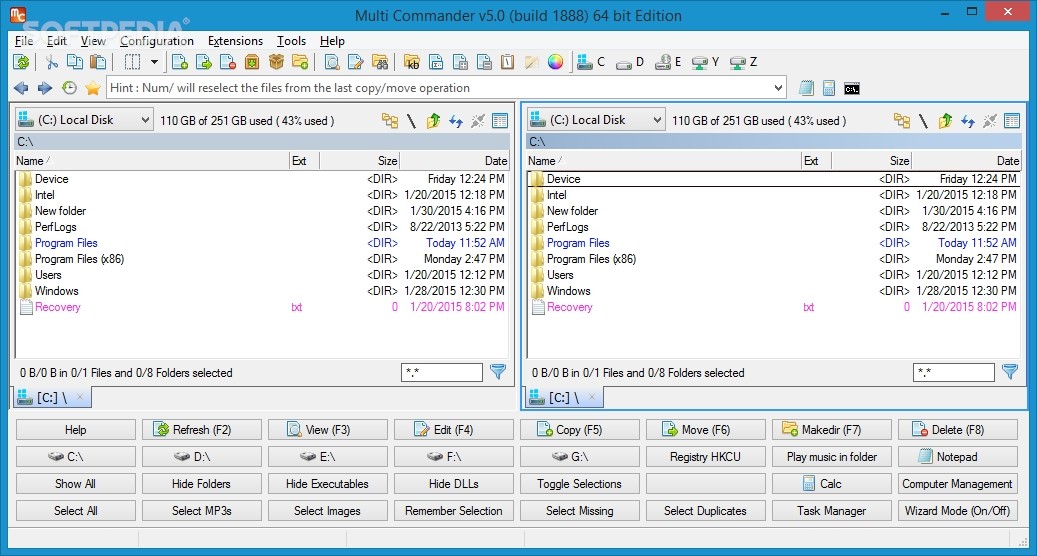

MULTI COMMANDER VS XYPLORER FULL
and same full path in his XYplorer instance. Now that the database exists each member of the network can connect to it using that same command Tags | Load Tags Database. If the database does not exist yet using that command will create it, else it will open it. "\\North\Share\XY\SharedTags.dat" (use any name you like). Now create the shared database using the command Tags | Load Tags Database. Nothing to do yet, just understand the structure. That location would typically be an UNC path pointing to a shared folder, for example "\\North\Share\XY\SharedTags.dat". The tags database is a single file that will be kept in a central location accessible to each member of the network. Each team member needs a copy of XYplorer installed on his local Windows.

The following 4 steps are all it takes to create a MUT network:

And if so configured, this will happen in real time. If one user annotates a file in his place, the other users will see it in their places. If the sources are from different drives the operation goes like this:Ĭ:\Pics\frisur\frisur.jpg D:\Pics\hairstyles\movie\ E:\Pics\hairstyles\poster\SchoolOfRock.pngĭon\Shots\ D\Pics\hairstyles\movie\ĭon\Shots\ E\Pics\hairstyles\poster\SchoolOfRock.Multi-User-Tagging (MUT) means to share XYplorer’s file tagging (Labels, Tags, Comments, and 16 Extra Tags) within a network among different members of a team, among different client computers. After we opted for the Rich Copy, we examine the target folder using a Multi Branch View, and see that the sources indeed have been copied together with their relative source folder structure.Ĭ:\Users\Don\Pics\ hairstyles\movie\Ĭ:\Users\Don\Pics\ hairstyles\poster\SchoolOfRock.pngĭon\Shots\ hairstyles\movie\ĭon\Shots\ hairstyles\poster\SchoolOfRock.png a copy along with the source folder structure, instead of the standard flat operation (where things might collide/merge).ģ. XYplorer auto-detects that the sources are "rich" (= come from more than one folder) and offers to do a Rich Copy, i.e. Now we select the folder "Don\Shots" in the tree and trigger a paste (Ctrl+V). In a Multi Branch View three files from different folders have been selected and copied to the clipboard (see Status Bar message).Ģ. Structure as well and thus avoid collisions of the sources in theġ. Now, where appropriate,Ĭopy/Move/Paste operations optionally copy the source folder You can also add them to the Catalog or to the Favorite Folders, filter them, create User Buttons pointing to them, and so on.Īutomatic Rich File Operations. Of course, these Multi Branch Views are preserved in their tabs and can be opened just like normal folders. Two completely unrelated folders in one view. Here's a shot of a Multi Branch View that combines folders from different ends of the computer in one view: Now isn't that the way you always wanted to organize your files? And you can do this across your system just as easily. You now see the moved file SchoolOfRock.png in the new subfolder. Voilà, the result is immediately visible. To demonstrate the power of such a Multi Branch View we drag a file from one subfolder to another.Ĥ. The full paths are also shown in the Address Bar.ģ. After clicking the Branch View button in the toolbar the complete contents of the three folders are listed. Three folders have been selected in the file list.Ģ.

Here's a graphic example (click the thumbnails to zoom):ġ. Quickly view the complete contents of two or


 0 kommentar(er)
0 kommentar(er)
